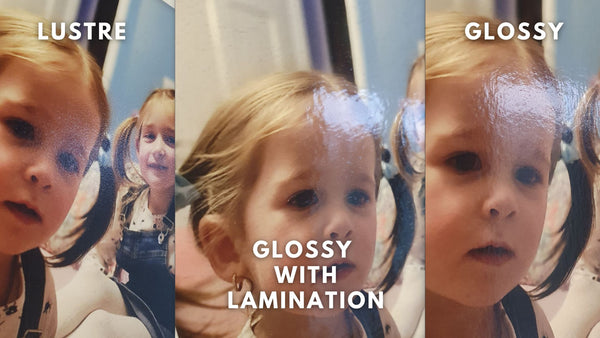Print types explained

Premium Lustre Paper is a semi-shiny, slightly pebbled-textured photo paper that combines the durability and softness of matte paper with the shine and contrast of glossy paper. It provides a very professional look with excellent color and detail without reflecting too much light.
Advantages of Lustre Paper for Photo Tile Prints
👍Its semi-reflective surface makes it a versatile paper for many purposes.
👍Since it doesn’t reflect that much light, you can hang it on a wall and see it from different angles without any distracting glare— perfect for galleries and decorative prints!
👍It provides smooth and accurate skin tones for portraits.
👍It’s more resistant to fingerprints, blemishes, and scratches.
👍It looks professional.
Disadvantages of Lustre Paper for Photo Prints
👎It loses a bit of contrast and sharpness due to its pebbled texture.
👎The colors don’t ‘pop out’ as much as with a glossy finish.
Glossy Photo paper is a popular type of photographic paper with a shiny and smooth coating, giving your prints a reflective, almost glass-like finish. It’s the typical photo paper used to print your family photos in a regular lab.
Advantages of Glossy Paper for Photo Tile Prints
👍It provides crisp, striking images with high contrast.
👍It delivers vibrant colors, bright highlights, and intense blacks.
👍It has a smooth surface that preserves and enhances all the details of the photo.
Disadvantages of Glossy Paper for Photo Tile Prints
👎Can reflect a large amount of light and can be difficult to see from some angles depending on the light source in the room.
👎It’s prone to hold fingerprints and marks.
Glossy photo paper with Lamination combines the Glossy photo paper with a clear glossy lamination film.
Adding lamination to the Glossy photo paper ads UV protection to your photo tile and added resistance to scratches and fingerprints.

